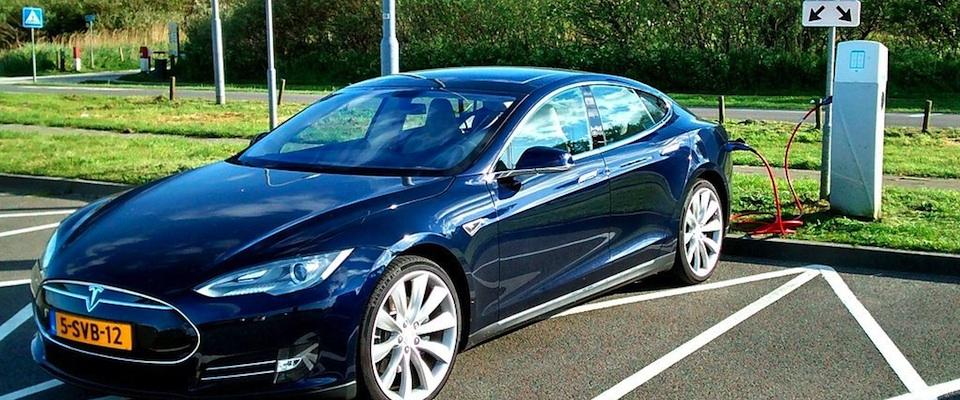Tesla claims to be the fastest on the planet, but BMW touts that it can go from 0 to 80 in less than half an hour. The electric car makers aren’t bragging about miles per hour—they’re touting percent battery charge.
The race for fast-charging stations is on: Tesla has more than 100 of these supercharger stations in North America. Both Oregon and Washington have invested in direct-current fast chargers (such as BMW’s) every 25 to 50 miles along their “West Coast Electric Highway,” one of the largest continuous networks of fast chargers on the continent. And thus technology has begun to clear a great hurdle to adopting the electric vehicle—the inconvenience of long charge times.
Factor in new legislation—such as California Gov. Jerry Brown’s Zero-Emission Vehicle Action Plan, an executive order designed to boost the state’s number of fully electric vehicles from a few hundred thousand to 1.5 million by 2025—and we can expect a new wave of electric vehicles to dart in within the decade, if not sooner.
There’s just one problem: Our electrical grids might not be ready.
A supercharging Tesla coming online would “feel” to the grid as if 120 houses came online for half an hour—like an entire neighborhood popping up in the middle of a city.
The average California household uses energy at a rate of less than 1 kilowatt* (amounting to 19 kilowatt hours per day, according to the U.S. Energy Information Association). BMW’s new direct-current supercharger charges at a rate of 24 kilowatts, which seems like a lot until you realize that BMW’s charger is small potatoes compared to most DC fast chargers, which hover around 50 kilowatts. And Tesla? Tesla’s superchargers come in at a whopping 120 kilowatts.
Supercharged vehicles haven’t used more energy to charge—they’ve just used it faster. When it comes to the grid, that’s a huge difference, because timing is everything.
Scott Moura is an assistant professor in civil and environmental engineering at UC Berkeley, and a proponent of “smart cities”: urban centers that coordinate among their infrastructures. Traditionally, Moura says, cities’ electric and transportation grids remain separate, but with the advent of electric vehicles, the networks are “colliding.” The collision couldn’t be clearer than Moura’s example of a supercharging Tesla coming online, which he says would “feel” to the grid as if 120 houses came online for only half an hour. “It’s like an entire neighborhood popping up in the middle of a city, and then disappearing,” he says.
Even when electric-vehicle owners charge their cars at a much slower rate of 6 or 7 kilowatts per hour overnight, that can still be a problem. The demand for energy is spiking each evening just as electric vehicles typically roll in to charge, and just when the source of solar power is setting. If demand spikes too high in an EV-smitten zip code (cough, Silicon Valley), its transformers, built to handle modest residential loads, may blow out.
We’ve known what this might look like for a while now: In 2011, the Utilities Telecom Council trade group released a report highlighting the exponential rise in energy use that will come with the widespread adoption of electric vehicles. Gigaom, a blog dedicated to “humanizing technology,” followed up by painting a picture of “blown transformers (and) neighborhood blackouts” from mass electric-vehicle charging. The article noted that the electrical utility giant PG&E had flagged plug-in zealous Berkeley as a “hot spot” that may be vulnerable to grid overload.
This hardly means we shouldn’t give the green light to green cars, which do move us away from dependence on fossil fuels. But they also present a problem: If California is going to go for 1.5 million of them by 2025, we need to know what to expect, and crucially, where and when to expect it.
This is where Alexei Pozdnoukhov comes in. Pozdnoukhov, like Moura, works at Cal in smart cities research. He directs UC Berkeley’s Smart Cities Research Center, where a research initiative called the Smart Bay Project may provide us with the crucial information to prevent an electric-grid meltdown.

Here’s how it works: The Smart Bay model couples data about drivers (obtained mostly through tracking signals from their cell phones) and the transportation grid (using trackers such as highway detectors) to create a model of urban residents’ mobility.
So far, Smart Bay has collected more than a million data points, but Pozdnoukhov can choose how many to display on the model’s visual representation—a satellite image of the Bay Area and its transit systems. If he picks 50 data points, for instance, 50 green dots appear on the computer’s screen and scuttle around like fluorescent digital ants. It’s clear from the visual that if Pozdnoukhov’s team wanted to, they could track the daily patterns and behaviors for each ant. Each is, for the record, anonymous; but in the age of big data, concerns about potential privacy infringement are impossible to ignore. Pozdnoukhov says he’ll leave that conversation to experts in the social sciences.
Given the level of detail in the Smart Bay module, Pozdnoukhov’s team can estimate which areas are populated by residents likely to purchase electric vehicles and how those cars would be used. Such information can be a game-changer, a glimpse of what a world of electric cars would mean to the grid, as a recent collaboration of American, Chinese and Filipino researchers found through their study of taxi movements in Beijing.
Back in California, Pozdnoukhov and Moura have set their sights on modeling not just what could happen with the spread of electric vehicles, but what should happen: The professors hope to secure funding to explore how to better manage electric-grid demand by influencing the behavior of electric-car drivers. For example, giving those drivers financial incentives—such as offering them free parking and free charging hook-ups at BART stations—might lessen pressure on the grid.
Tesla is working to develop another possible solution: a 90-second battery swap. The company website shows a demo of model S Teslas trading drained batteries for fully charged replacements, a technology that the company hopes will give consumers the option to transfer the burden of charging back to the company. The company, in turn, could use that opportunity to charge batteries at times that are best for the grid, and even in locations where the grid is powered by more renewable sources.
But Moura expects widespread battery-swapping will take quite a while to clear the institutional hurdles. For now, he suggests, it’s probably best to think small—presumably at the level of fluorescent digital ants.
* Corrected from a previous version






















